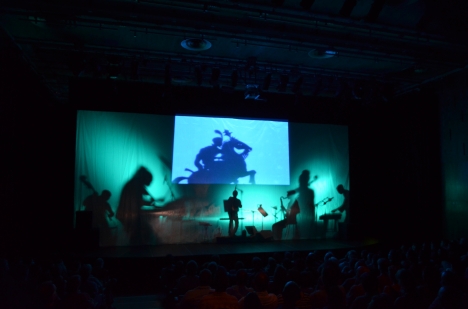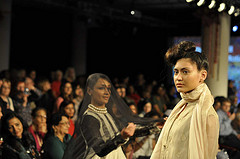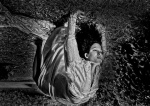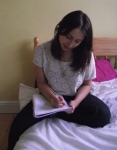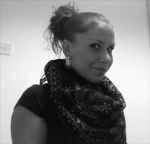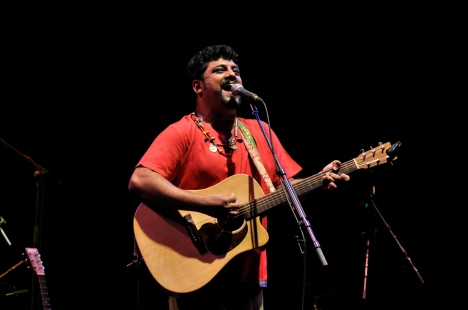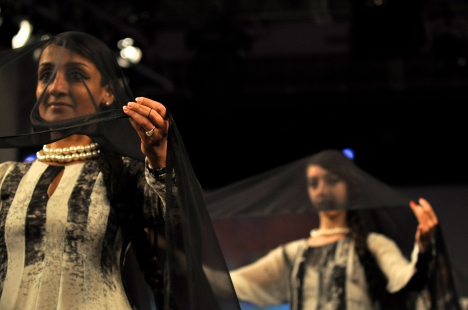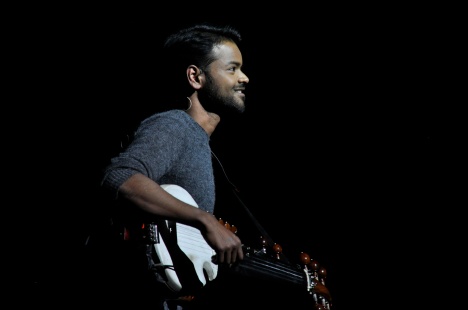
Copyright 2011 © Yemisi Blake
Could you please introduce yourself for the readers of the blog.
Hi, my name is Soumik Datta and I am an artist in residence here for Alchemy Festival 2011. I’m having a great time and I’ve been here all week. I’ve done my show and now I’m working with Gauriji on her show.
We’ve heard that you are the first person to play the sarod like a guitar, could you please tell us how that came about?
I guess living in this country; you get to see lots of different kinds of music, you get exposed to different influences. But being a product of Britain and an Asian in Britain I felt that standing up having played chordal material on the sarod wasn’t impossible it just hasn’t been done before because people haven’t felt it to be appropriate. I feel that is very appropriate to the music that I want to present and so it just came about really.
What is that kind of music you want to present to everyone?
Well, I think the thing is with the classical world is that everything is really set and I think that people have pre-conceptions of music, dance and the arts generally. My aim is to present something that is true to life. We’re British Asian, you’re British Asian and so am I and playing pure classical Indian music seems somehow incongruous to the life we lead. If this is my profession and if this is my art it has to be inline with my life, I mean why should it be miles apart? I think that my music should say something about my life and I think that the music I present should be truthful to the lives we lead, which is a combination of Indian elements and Western elements. My show had a lot of AV and audio-visual stuff, pre-recorded text and theatre elements which is something that I’ve picked working with Akram Khan and Nitin Sawhney who are obvious pioneers in this field. I have an idea on what the next step might be and I’d like to try it out.
How do you think your show went generally?
I think it was received really well. I got a standing ovation so generally it went well and it got some great reviews. But for me I still have a while to go before I achieve what I had in mind, the concept of the concert. Basically what I had in mind was that it wasn’t just a music concert, where people play a couple of pieces. What I wanted was a combined, integrated experience where people come in and they watch these videos, and hear this music, the watch the spacing and there is a choreography to it and they come away with a more holistic experience. Full with everything combined rather than a concert experience. I think that is the way forward because otherwise people don’t come to shows really, they would rather stay at home. I mean no one wants to pay £12.00, £13.50 to see a show of an emerging artist unless you give them something new.
The last question, you mentioned earlier that you had a vision of a holistic experience in concerts. Do you have any ideas on how to develop it further?
In the future yeah, I would love to collaborate with Nitin Sawhney on the next project, which would be something like this. He came and introduced the show, which was really sweet of him, he’s a good friend and I’d love to work with someone who is on that level who has been around for a while. He has a voice and a stamp in the industry, a trademark sound and I’d love to bring my ideas and my sound and bring it to him to see if we can collaborate and take it to the next level. There are a couple of shows that I have in mind for the future, Circle of Sound is now developing as we have another show of the 24th of June in the Songlines Encounters Festival.. It’s going to be a bit different to this show but it is still Circle of Sound, it’s an ongoing development project. After this we will be working on something called Footprints, which I won’t say so much about now but it’s the next step.
Interview by Anjali Banerjee, Alchemist.
Filed under: Alchemy 2011 | Leave a comment »










